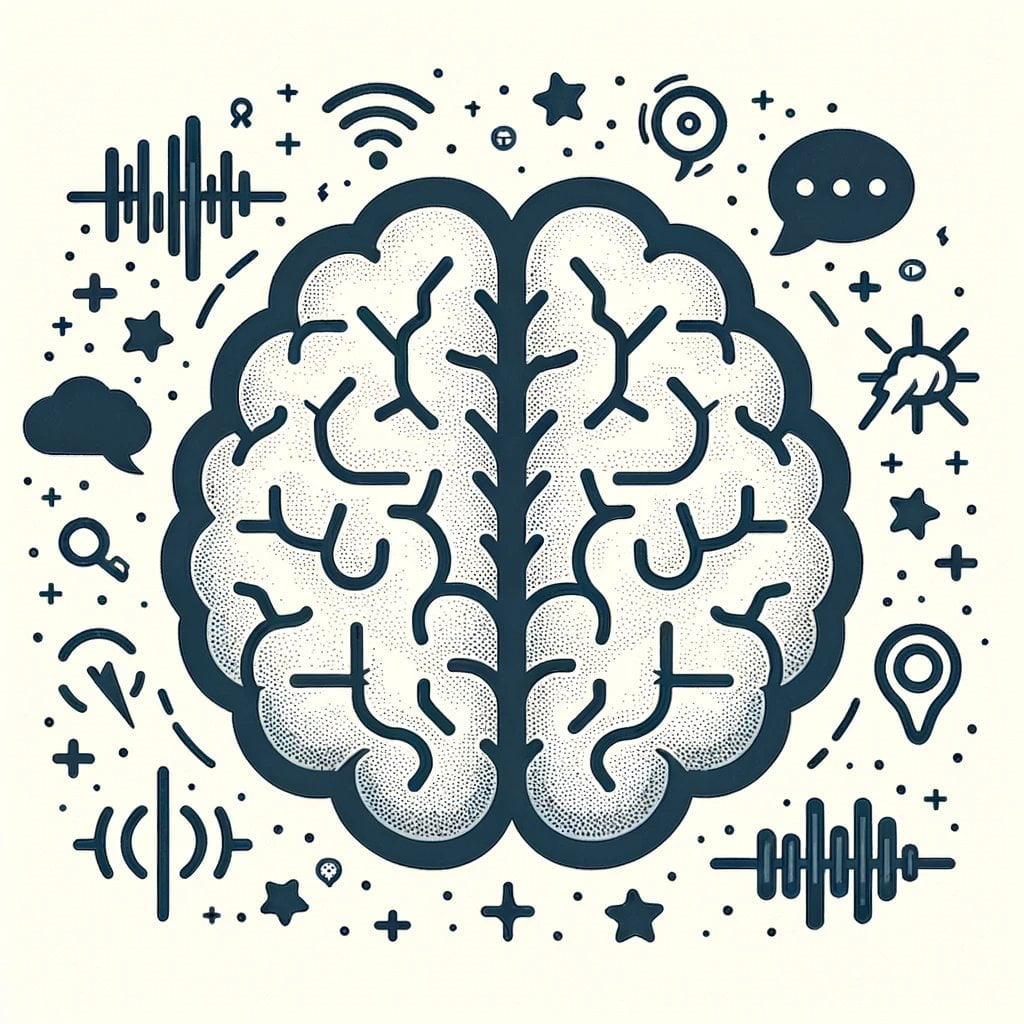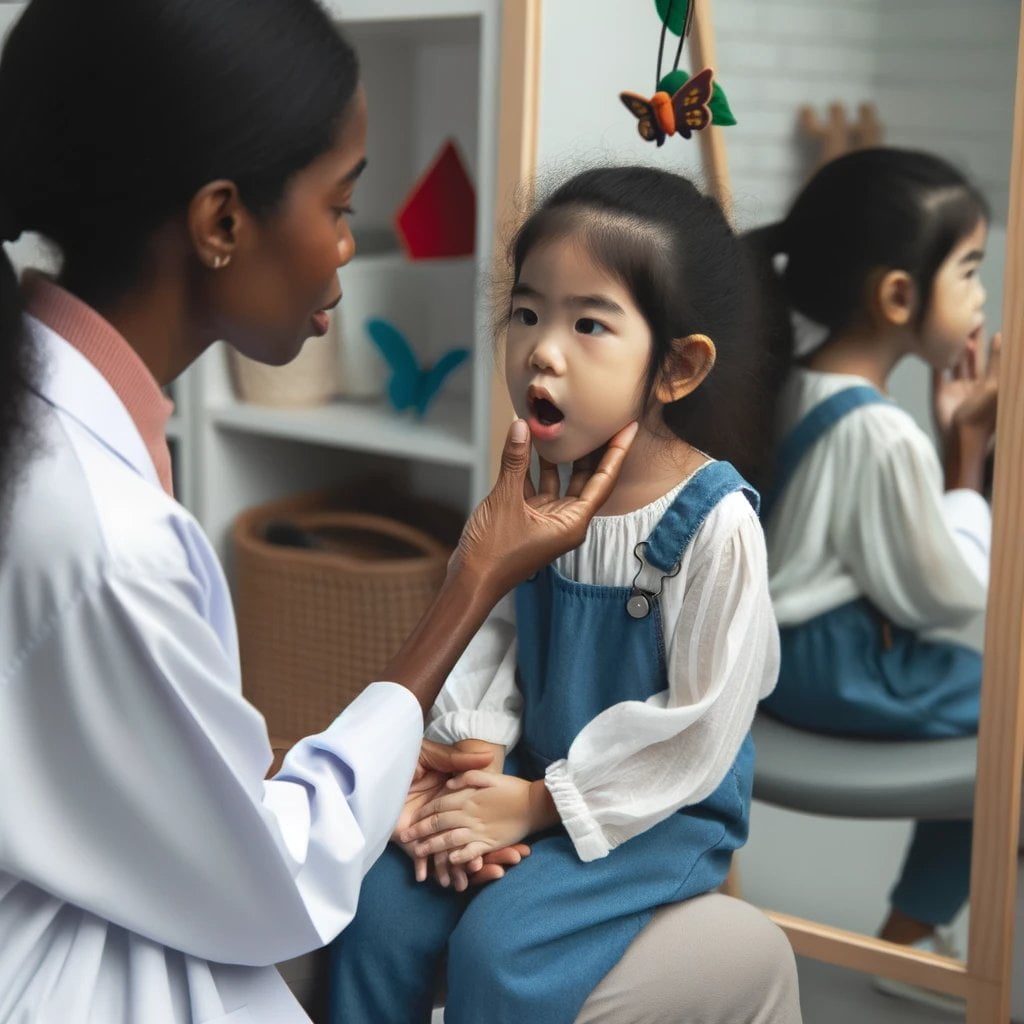You or a loved one with a speech issue should understand this tough and misunderstood condition. Speech problems hinder communication, generating frustration and isolation. This topic covers speech issues’ causes, symptoms, and treatments. We will also provide practical advice to improve speech disorder patients’ communication and quality of life.
What is a fact about speech disorder?
We can grasp speech problems’ prevalence and impact by knowing some crucial facts. Let’s examine these facts to comprehend speech difficulties.
The Numbers Speak: Prevalence of Speech Disorders
Speech difficulties are more frequent than you realize. Approximately 8–9% of children have speech-sound abnormalities. This indicates a large section of the population has trouble articulating sounds. By first grade, 5% of these kids develop speech impairments that may hinder their communication.
Standalone Challenges: Is There an Underlying Cause?
Most children with articulation difficulties have no other disabilities or causes. It suggests their speech production issues are not caused by another condition or handicap. It also highlights that speech impairments are distinct issues that require treatment.
The Stuttering Spectrum: A Common Communication Difficulty
Stuttering, a common speech issue, affects about 3 million Americans. Speech repetitions, prolongations, and blockages are all signs of stuttering. This syndrome can severely impair confidence and communication. Stuttering sufferers can improve their speech fluency and live full lives with assistance and therapy.
A Language Impairment Landscape
About 7% of Americans have language impairment, another speech issue. This handicap might make it hard to understand, communicate, organize, or follow discussions. Language difficulty can coincide with autism spectrum disorder or learning impairments; thus, individualized help is essential.
The Family Connection: Siblings and Parents Affected
Speech and language disorders can run in families. Research shows that 28–60% of children with speech and language disorders have a sibling or parent with similar issues. This family connection shows a genetic component to speech impairments, emphasizing the need for early detection and intervention to help affected individuals and their families.
After reviewing some significant speech disorder facts, it’s crucial to understand and address these issues. Speech impairments can be overcome to promote diversity and empower people to fulfill their potential.
This table summarizes the above facts to help you understand:
| Key Facts About Speech Disorders | Statistics |
|---|---|
| Prevalence of speech sound disorders | 8-9% of children have speech sound disorders |
| Noticeable speech disorders by 1st grade | 5% of children have noticeable speech disorders |
| Majority of children with articulation disorders | Most children have no other handicaps or causative factors |
| Number of Americans who stutter | More than 3 million Americans stutter |
| Americans with language impairment | Nearly 7% of Americans have some form of language impairment |
| Familial connection in speech disorders | 28-60% of children with speech and language deficits have a sibling and/or parent who is also affected |
Understanding speech disorders goes beyond the numbers; it’s about compassion, support, and providing practical advice. By acknowledging these facts, we can work towards building a more inclusive society where individuals with speech disorders can thrive.
Now it’s your turn. What questions or experiences do you have regarding speech disorders? Let’s explore this topic further and empower each other with knowledge and understanding.
To delve deeper into the fascinating world of speech pathology facts, click here. Discover the intriguing insights and discoveries that await you in this comprehensive guide. Uncover the secrets behind speech disorders, explore the remarkable advancements in therapy techniques, and gain a newfound appreciation for the crucial role speech pathology plays in transforming lives. Embark on this enlightening journey and expand your knowledge of this captivating field.
Causes of speech disorders
Different causes of speech impairments can impair sound production and communication. Understanding the causes can illuminate these issues. Consider some frequent causes and their effects on speech.
Brain damage and neurological disorders
- Brain damage: A stroke or head injury can result in brain damage, affecting speech production. It impairs the coordination between the brain and the muscles responsible for speech.
- Degenerative diseases: Conditions like Huntington’s disease, Parkinson’s disease, or amyotrophic lateral sclerosis can progressively damage the brain, leading to speech difficulties.
- Neurological disorders: Certain conditions, such as autism and attention deficit hyperactivity disorder (ADHD), can contribute to speech disorders.
Physical Factors
- Muscle weakness: Weak muscles in the lips, tongue, or jaw can affect the precision required for clear speech.
- Damaged vocal cords: Injuries or trauma to the vocal cords can disrupt vocalization and hinder speech production.
- Structural abnormalities: Physical impairments like a cleft lip and palate can interfere with speech development.
Other medical conditions
- Dementia: Speech disorders can arise in individuals with dementia due to the impairment of cognitive and communication functions.
- Cancer: When cancer affects the mouth or throat, it can impact speech by compromising the structures involved in vocalization.
- Hearing loss: The ability to accurately hear and process sounds is crucial for speech development. Hearing loss can impede speech clarity and pronunciation.
Emotional and psychological factors
- Trauma and emotional stress: Experiencing traumatic events or being under constant psychological strain can affect speech production and fluency.
- Mental strain: Conditions like anxiety or depression may manifest as speech disorders, making it challenging to communicate effectively.
Developmental and Genetic Factors
- Genetic abnormalities: Certain genetic conditions can be associated with speech disorders, making it difficult to articulate sounds accurately.
- Articulation and phonological disorders: Children may develop speech disorders when they struggle with the motor skills required for clear pronunciation.
- Intellectual disability: Individuals with intellectual disabilities may experience speech difficulties due to cognitive impairments.
Speech Abuse and Misuse
- Vocal abuse: Frequent yelling, screaming, or straining the voice can lead to vocal cord damage and speech disorders.
- Substance use disorder: Substance abuse, particularly alcohol or drugs, can significantly impact speech fluency and clarity.
Implications of Speech Disorders
Speech difficulties can make it hard to communicate. They may have trouble producing sound, fluency, and speech flow. Repetition and blockages can impair speaking.
Seeking Diagnosis and Treatment
Speech problems are diagnosed by assessing vocal cord function, speech sound production, and language skills. Professionals use speech therapy to improve speech clarity, muscular strength, and communication methods. Individualized exercise programs and assistance equipment may also help.
Interventions and support for speech impairments require understanding their causes. By understanding these characteristics and seeking diagnosis and therapy, speech disorder patients can improve their communication and overcome their challenges.
Treatments and Therapies for Speech Disorders
Speech difficulties require excellent treatments and therapies to overcome communication issues. Speech therapy exercises and re-pronunciation lessons can treat numerous speech issues.
Speech Therapy: A Key Treatment Option
Speech therapy is a key treatment for speech impairments. Speech-language pathologists, or speech therapists, assess and treat communication issues such speech disorders.
Tongue-and-mouth exercises, facial gestures, and reading aloud are speech therapy activities. These exercises strengthen speech muscles, improve articulation, and boost communication. Speech therapy helps people with speech difficulties speak properly and confidently.
Tailored Therapies for Specific Disorders
Speech disorder therapy varies on the disorder. Articulation therapy may help people with speech sound issues. Language intervention exercises may be better for those who struggle with language understanding and expression.
Stuttering, apraxia, and dysarthria require particular therapies. Speech-muscle strengthening exercises may help people with dysarthria, brain disease that causes muscle weakness in the face, lips, tongue, throat, or chest.
Early Intervention and Practice at Home
Early intervention is essential for children and people with speech difficulties. Early therapy can improve communication and long-term outcomes. Home speech exercises and strategies can boost therapy outcomes and help people apply their abilities in real life.
Pros and Cons of Treatments and Therapies for Speech Disorders
Pros:
– Speech therapy is an evidence-based intervention that has proven to be effective in treating speech disorders.
– Therapists tailor treatment plans to meet individual needs, ensuring personalized care and targeted progress.
– Early intervention and consistent practice enhance the likelihood of successful outcomes.
Cons:
– Treatment duration and progress can vary depending on the severity of the speech disorder and individual factors.
– Accessibility to speech therapy services may be limited in certain areas, making it challenging for some individuals to receive timely and adequate treatment.
Seeking Help and Support
If you or someone you know has speech or communication issues, you need a speech-language pathologist. These specialists can evaluate, diagnose, and treat speech issues.
Remember that asking help is the first step to better communication. People can overcome speech difficulties, express themselves boldly, and reach their personal and professional potential with the correct treatments and therapies.
Table: Speech Disorder Treatment Options
| Treatment Method | Description |
|---|---|
| Speech therapy exercises | Targeted activities to improve articulation, language skills, and overall communication abilities. |
| Physical exercises | Strengthening exercises for speech muscles, promoting better control and coordination. |
| Pronunciation coaching | Guidance and coaching to re-teach correct pronunciation and improve clarity in speech. |
| Practice in front of a mirror | Utilizing visual feedback to monitor and adjust speech production, improving articulation and fluency. |
| Speech-muscle strengthening exercises | Exercises specifically designed to strengthen the muscles involved in speech production. |
| Articulation therapy | Focused therapy aimed at improving the correct production of speech sounds. |
| Language intervention activities | Strategies and exercises to enhance comprehension and expression of language. |
To conclude, speech problem treatments and therapies offer hope and help to those struggling with communication. speaking-language pathologists and constant practice can enhance speaking clarity and confidence. Remember that expert help is the first step to communicative power.
FAQ
What are some common causes of speech disorders?
Speech disorders can be caused by a variety of factors, including brain damage due to a stroke or head injury, muscle weakness, damaged vocal cords, degenerative diseases such as Huntington’s disease, Parkinson’s disease, or amyotrophic lateral sclerosis, dementia, cancer affecting the mouth or throat, autism, hearing loss, neurological disorders, brain injury, mental strain, constant bullying, intellectual disability, substance use disorder, physical impairments such as cleft lip and palate, and vocal abuse or misuse.
What conditions can lead to speech disorders?
Common conditions that can lead to speech disorders include autism, attention deficit hyperactivity disorder (ADHD), strokes, and oral cancer.
How do speech disorders affect communication?
Speech disorders can impair vocal communication and sound production, and can disrupt the flow of speech, causing repetitions and blocks.
How are speech disorders diagnosed?
Diagnosing speech disorders may involve evaluating vocal cord function, speech sound production, and language skills.
What are the treatment options for speech disorders?
Treatment for speech disorders may include speech therapy, exercises to strengthen muscles involved in speech production, assistive devices, and communication strategies. Speech therapy activities can include tongue and mouth exercises, facial movements, reading out loud, and various other techniques depending on the specific disorder. Early intervention and practice at home can enhance the success of treatment.
- Unlock English Vocabulary: The Comprehensive Con Prefix Guide - April 20, 2025
- Unlock Wordle & Scrabble Wins: Mastering Words with S, T, A, R, T - April 20, 2025
- Unlock 6000+ words beginning with he: A comprehensive analysis - April 20, 2025


















